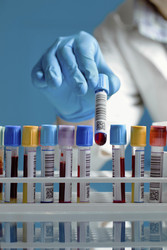Joint research on rare diseases
Research of so-called rare diseases is poorly funded and disease aetiologies are still unclear. Moreover, research efforts are fragmented, resulting in duplication of efforts. Better infrastructure and coordinated efforts across Europe and internationally will allow for better diagnostics and treatments to be tested in clinical studies. The EU-funded E-RARE-2(opens in new window) (ERA-Net on rare diseases) project built on the work of its predecessor E-RARE-1 to strengthen rare disease research and funding networks. Project partners also focused on including New Member States, non-European countries, and other important stakeholders and initiatives. By 2014, six joint transnational calls for research on rare diseases were successfully completed. The research bids covered a range of diseases and potential therapies, including stem cells, gene therapy and customised animal models. The final results of the granted research projects in the two first calls were analysed in E-RARE-2. All of these funded projects contributed to the development of new infrastructures such as databases, registries and biobanks that will enhance the sustainability of rare disease research. E-RARE facilitated the academic training of several talented young researchers via funded projects: 58 MSc and 76 PhD students in the first two calls. In all, about EUR 56 million was invested to fund 79 high-quality research projects involving 347 research teams. Research outcomes have been published in the best-ranking journals. The project developed an online research portal to facilitate information exchange, providing an interactive FAQ module as well as a search engine to find collaborators. Project activities helped set off new collaborations and improved cooperation sustainability. An impressive 77 % of consortia established new collaborations thanks to E-RARE funding. Even those researchers who did not obtain funding benefited through networking via E-RARE calls that helped them establish new collaborations. E-RARE-2 projects helped reduce fragmentation of resources and developed infrastructure that will ensure sustainability of future research projects on rare diseases. Research cooperation in this area will be further strengthened through the ongoing E-RARE-3 project. Finally, funders from the E-RARE-2 consortium joined the International Rare Diseases Research Consortium (IRDiRC). IRDiRC coordinates the global exchange of information between rare disease research funders and scientists in their funded projects to speed up the development of new diagnostics and therapeutics. This should ultimately help shape the rare diseases research landscape and policies.



